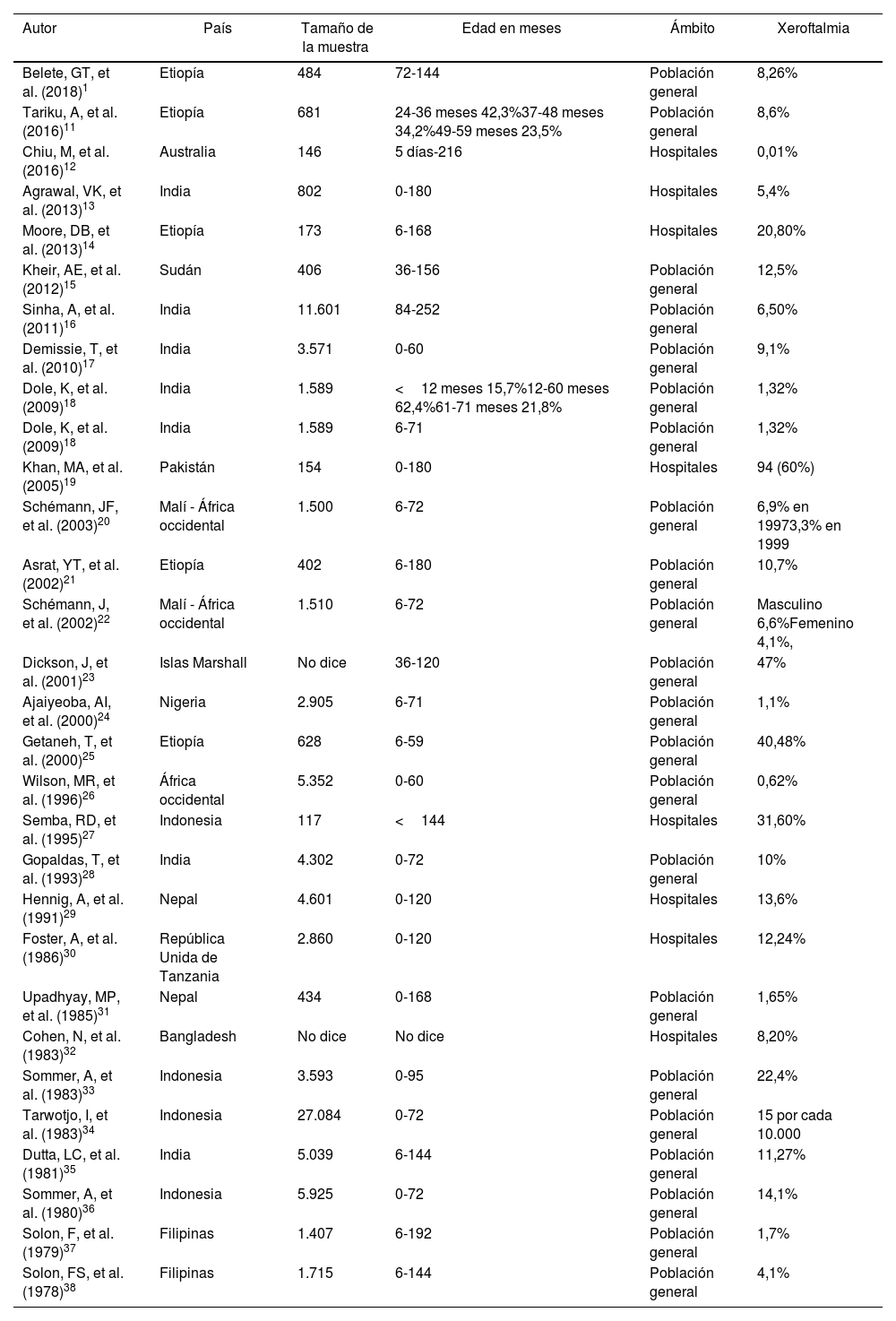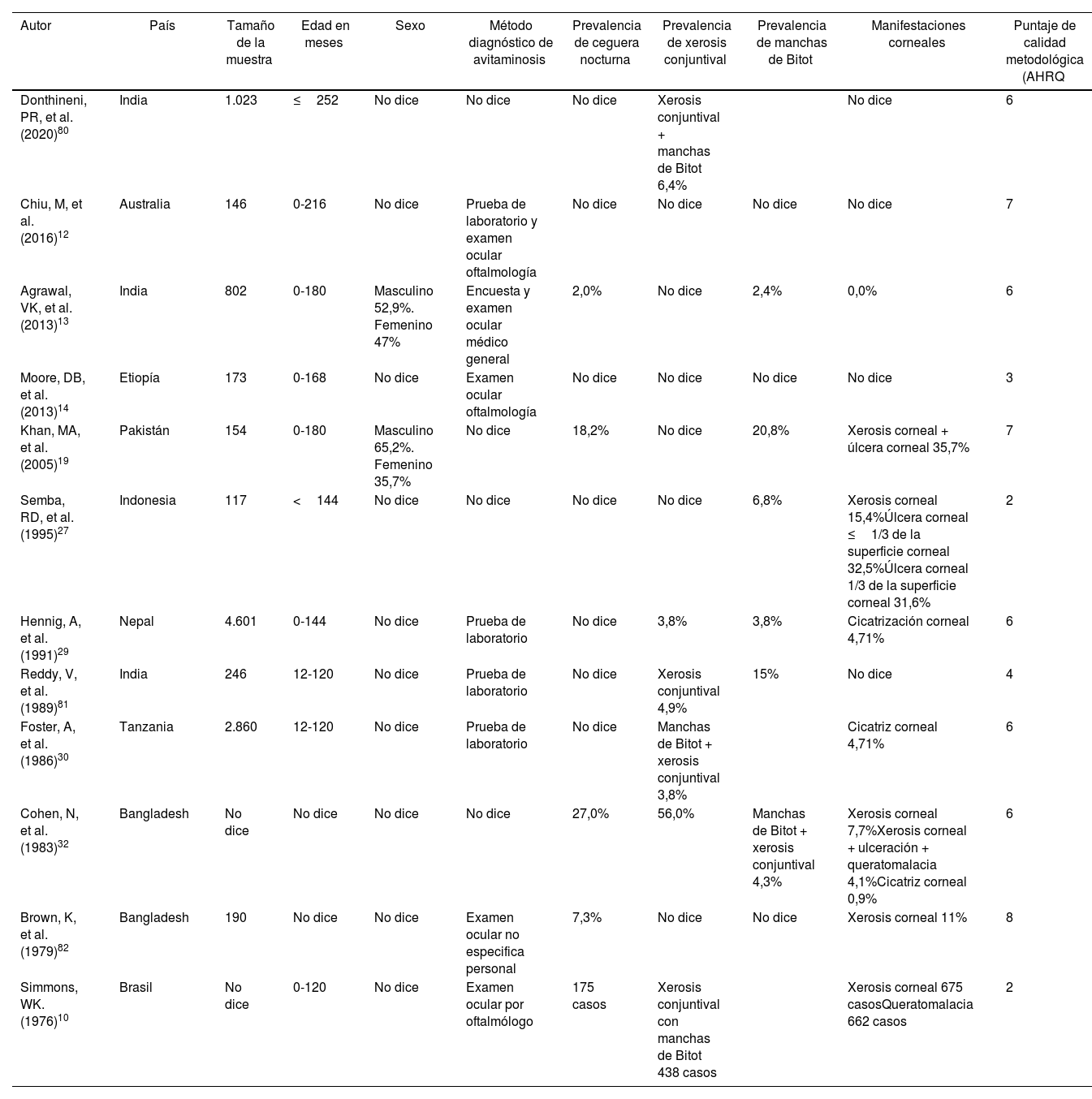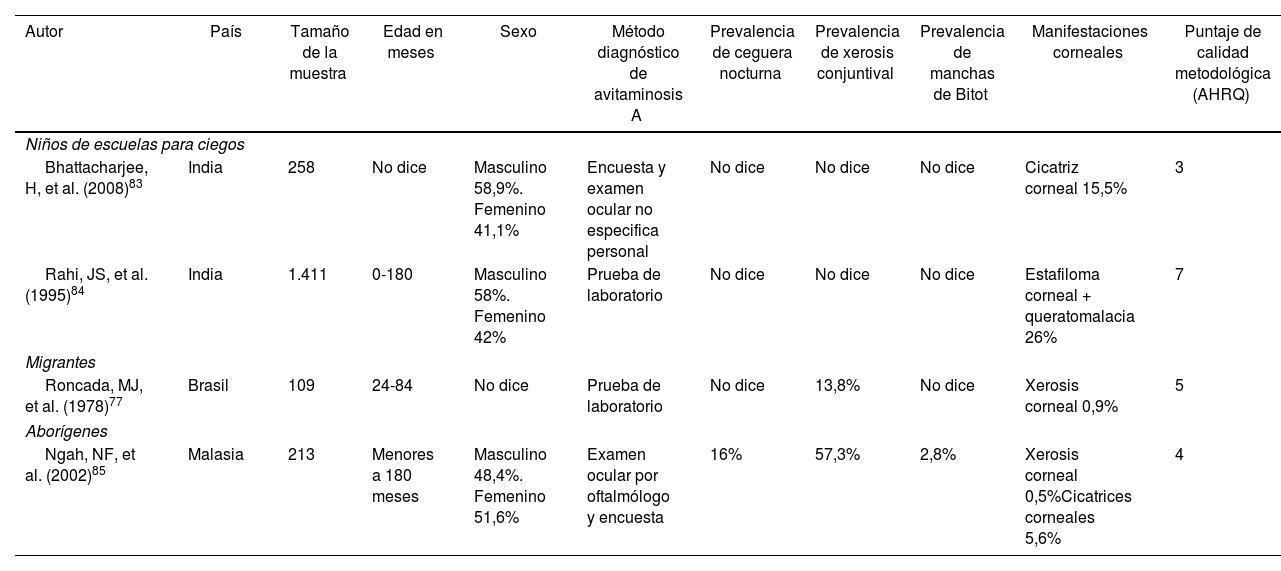Identificar la prevalencia de manifestaciones oculares por avitaminosisA en niños.
MétodosLa búsqueda sistemática se realizó en septiembre del 2022. Se incluyeron estudios observacionales con poblaciones entre los 0 y los 18años que tuvieran manifestaciones oculares por deficiencia de vitaminaA. Se excluyeron estudios con sujetos seleccionados con enfermedades de base. Los resultados se exportaron a la herramienta Rayyan para la eliminación de duplicados y lectura pareada. Se realizó la evaluación de calidad metodológica de los artículos incluidos con el instrumento del Instituto Agency for Healthcare Research and Quality.
ResultadosFueron incluidos 79 estudios publicados entre 1972 y 2020, realizados principalmente en Asia 42 (53%) y África 28 (35,4%). En América, 4 estudios fueron de Brasil; no se encontraron investigaciones en Europa. Las manifestaciones oculares por avitaminosisA más reportadas fueron: xeroftalmia en el 38,0% de los artículos y ceguera nocturna en el 69,6%, siendo más común en población general (76,3%) y menos en aborígenes (1,9%). Los métodos diagnósticos utilizados fueron: encuestas (82,3%), pruebas de laboratorio (32%), valoración ocular por optometría u oftalmología (25,3%) y examen ocular por personal entrenado (8,9%). Los estudios se realizaron en población general (79,7%), hospitales (15,2%), escuelas para ciegos (2,5%), migrantes en tránsito (1,3%) y aborígenes (1,3%).
ConclusiónLas manifestaciones oculares continúan representando un problema de salud pública que afecta a niños de 0 a 18años en 4 continentes, con mayor énfasis en Asia y África. Se requieren estudios adicionales para conocer el impacto del déficit de vitaminaA en Latinoamérica.
Identify the prevalence of ocular signs due to vitaminA in children.
MethodsWe conducted a systematic search in September 2022. Observational studies with populations between 0-18 years old, who had ocular signs due to vitaminA deficiency, were included. Studies with selected subjects with underlying diseases were excluded. The results were exported to the Rayyan tool for duplicate removal and paired reading. The methodological quality assessment of the included articles was carried out with the Agency for Healthcare Research and Quality Institute instrument.
Results79 studies published from 1972 through 2020 were included, conducted mainly in Asia 42 (53%) and Africa 28 (35.4%). In America, 4 studies were from Brazil; no research was found in Europe. The most reported ocular manifestations due to vitaminA were: xerophthalmia in 38.0% of the articles and night blindness in 69.6%, being more common in the general population (76.3%) and less in aborigines (1.9%). The diagnostic methods used were: surveys (82.3%), laboratory tests (32%), ocular evaluation by optometry or ophthalmologist (25.3%) and ocular examination by trained personnel (8.9%). The studies were conducted among the general population (79.7%), hospitals (15.2%), schools for the blind (2.5%), migrants in transit (1.3%) and aborigines (1.3%).
ConclusionOcular signs continue to represent a public health problem that affects children from 0 to 18years of age on 4 continents, with greater emphasis on Asia and Africa. Additional studies are required to understand the impact of vitaminA deficiency in Latin America.
Artículo
Comprando el artículo el PDF del mismo podrá ser descargado
Precio 19,34 €
Comprar ahora











